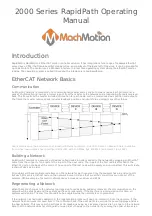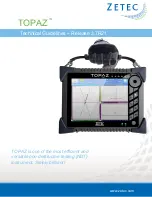
Instruction Manual IM‐186
CUSTOMER'S INFORMATION BOX
CONTENTS ARE INDEPENDENT OF RIVERHAWK DOCUMENT CONTROL
215 Clinton Road
New Hartford, NY 13413
Tel: +1 315 768 4855
Fax: +1 315 768 4941
Email: [email protected]
REV
373A4016
GE DRAWING NUMBER
Revision E
Page 13 of 23
Repositioning the stud can be done as follows:
1.
Slightly loosen the puller screw.
2.
Back the nut opposite puller tool off about 1/2 turn.
3.
Tighten the puller screw side nut to take up the slack.
4.
Retighten
the puller screw per above and check for looseness of tool.
Note: Do not over extend the stud. Over extension can cause the piston to loose its seal and
leak oil.
CAUTION
Personal injury and equipment damage can occur if the puller screw is not securely engaged
with the tapered thread of the stud. Proper engagement is achieved when the puller screw is
tight in the stud and the Tensioner Assembly is free to rotate.
9.0 Stud Pulling and Tensioning
The studs will be tensioned in two steps, at 50% pressure and at final pressure. Follow the
tensioning sequence for each flange joint as defined on the data sheets found at the end of this
manual
WARNING
The safety cage MUST be in place and hands kept out of designated areas at all times when the
tensioner is pressurized otherwise personal injury can occur.
9.1 Tensioning at 50% pressure
After the tensioner is properly installed apply hydraulic pressure to the tool. Bring the pressure
to the 50% level in accordance with the following table.
Flange Position
Stud Size
50% Pressure
50% Stretch
Turbine to Coupling
2.246"
[57.05 mm]
9000 psi
[620 bar]
Do not measure
Do not use
Turn the cylindrical nut using the appropriate spanner ring and pin wrench as depicted in Figure
3 until it bottoms on the flange.









































